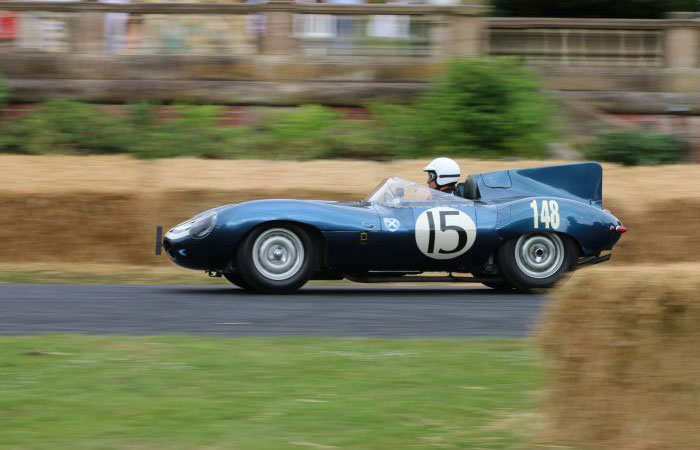
Gentleman Drivers – Investing in Motorsport
‘Gentleman Driver’ is a phrase that has become commonplace in motorsport, but the term is applied to an array of competitors. What is a Gentleman Driver and are they good for the sport?
The motorsport industry is estimated to be worth £9 billion to the UK economy alone. “How do you make a small fortune in motor racing? Start with a big one.” It is no secret that motorsport is an expensive pastime and one that has existed thanks to two things.
Firstly, private money spent on the sport by individuals doing it only out of passion and who are happy to use their own money. The second is the sponsorship that allows motorsport to be commercialised and ultimately, monetised. However, this is only applicable in the highest forms of the sport where visibility and exposure make sponsorship dollars viable. That said, sponsorship dollars alone, invested based on commercial factors, not passion, are not always enough.
Types of Gentleman Driver
A gentleman driver can generally be classed into two categories. First, those of an age where they compete purely for pleasure, with no ambition to climb the motorsport ladder or commercialise their activities. These drivers are likely to be found in the world of club or historic racing.
The other type of gentleman driver is an individual who competes at the highest levels alongside the professionals and is there, not because of raw talent or sponsorship dollars, but because of the funding he or she can bring to a team. They are wealthy amateur racers that did not forge a career in motorsport but in the business world, and their success has allowed them to buy into competing at a professional level – a concept unfound in any other sport, except perhaps polo. One could be forgiven for sniffing at these wealthy amateurs taking the seats of ‘real’ talent, blocking entry for young professionals and getting in the way of the pros on track. These are understandable grumblings but in most cases, unfair and untrue.
Gentleman drivers do a great deal to support motorsport and this should be acknowledged.
Gentleman Drivers at Le Mans
Motorsport at higher levels is expensive. A GT3 or GTE race car is now well in excess of £400,000 – a cost usually too much to bear for most teams or up and coming drivers, however well sponsored they may be. Step in the gentleman drivers. A gentleman driver will often purchase the car, have a team prepare and support it, with some of the cost being recovered via sponsored professionals as additional drivers, benefitting both the costs and the results.

Dominique Bastien
Last year’s 24 hours of Le Mans saw gentleman driver Dominique Bastien enter the race, the oldest ever to do so, at age 74. Bastien’s wallet got him the entry, but don’t think for a moment that gentleman drivers do not take the sport seriously. “What I want is to be viewed from the results I get on track…”
Gentleman drivers will often employ personal trainers, sports psychologists and managers to ensure they are as prepared as possible while navigating their regular day jobs. Without these individuals there would be fewer cars on track, fewer race series, fewer teams and fewer jobs, so we should acknowledge them for the support they provide. A superb Netflix documentary, “The Gentleman Driver” follows four wealthy businessmen determined to compete at the highest levels of motorsport. One driver featured is Canadian real estate tycoon, Paul Dalla Lana.

Paul Dalla Lana
Paul is one of the most prominent gentleman drivers. At age 54, he is not your typical racing driver, but he has raced with and supported Aston Martin Racing for eight seasons. Perhaps we owe him thanks for keeping Astons on track.
What many fail to recognise is that amateurs really make a difference. The pros are generally within a tenth of one another on any lap at any track. These highly tuned and experienced racers are able to extract every last fraction of a second, leaving little to tell them apart. After all, that is what makes them professionals. The occasional amateur is of course not quite up to the same pace but may lap within a couple of seconds of the pros. So, in a shared drive, all the good done by the pros can quickly be maintained or lost by a gentleman driver and ultimately make the difference in the results.
Investing in Motorsport
An interesting concept emerging is that of the ‘Gentleman Owner’ wherein a private individual purchases a racing car but does not race it himself. It is becoming increasingly common for wealthy enthusiasts to purchase a new racing car, effectively hiring it to a team and having professional racers behind the wheel. It is hoped that when the car is retired from its duties, it will have been developed, well prepared, have some notable results to its name and have had a few star drivers behind its wheel.
Why? Future collectability, future usability in lower series, or for investment. The prospect of watching ‘your car’ competing around the world at top-level motorsport is of course an attractive one and comes with plenty of bragging rights. Naturally, this opens the door for sponsorship opportunities and hospitality at some of the world’s greatest races. We can see the appeal.
Our commitment and support of the motorsport industry offers funding for teams or private individuals, so if you are considering any expenditure in relation to motorsports or would like to own a superstar race car, give us a call to discuss your options.
Originally published for Historic Motor Racing News, April 2021




